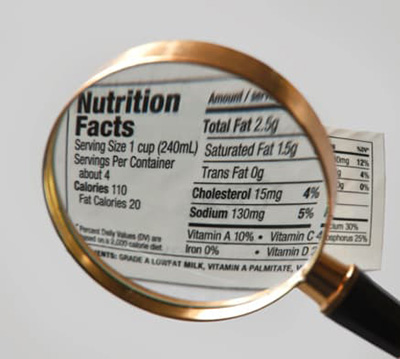Sneaky Sodium is Hard on the Heart
5.23.2025 | Heather Cooper

Nearly 90% of kids in the U.S. consume too much sodium, putting them at risk for high blood pressure in childhood, and heart disease and stroke later in life. While everyone needs some sodium to help control the fluid balance in the body and allow nerves and muscles work, too much sodium is harmful and is dubbed the ‘silent killer.’
Healthy Tides asked Kirsten Thompson, a Seattle Children's dietitian, to provide insight into how kids are consuming so much sodium.
“When I ask patients and families about sodium intake, they often say that they don’t eat too much sodium because they don’t add salt from the salt shaker to the foods they eat,” said Thompson. “They’re often surprised to learn that sodium is actually hidden in a lot of foods that we wouldn’t normally think of as salty.”
Sodium is found in table salt, baking soda and food preservatives. It’s a sneaky ingredient used in packaged foods to add flavor, preserve freshness, enhance color and change texture. That’s why a large proportion of the sodium kids eat is from packaged foods from grocery stores and convenience stores. Restaurants often use large amounts of salt for flavor so dining out also contributes to high sodium intake. Another place kids commonly get too much sodium is from school cafeterias. Clearly, avoiding the salt shaker is a good first step, but more attention is needed to lower the amount of sodium children consume. Read on to learn why choosing home cooked meals can help reduce your child or teen’s sodium intake.
How much is too much sodium?
The recommended daily sodium intake for kids is 1,500 to 2,300 milligrams (mg), depending on age. According to the American Heart Association, kids ages 2 to 18 eat 3,300 mg of sodium per day on average.
Thompson tells families that knowing the recommended daily sodium intake is important, and from there, they can drill down to look at the amount of sodium per serving of food.
“Sodium is broken down into five categories, from very low sodium per serving to very high sodium per serving,” said Thompson. “Foods that have less than 35 mg of sodium per serving are considered very low in sodium, and foods that have greater than 500 mg of sodium per serving are considered very high in sodium.”
Where Sodium Hides
Ten types of food account for almost half the sodium that kids consume: pizza, Mexican mixed dishes, sandwiches (including burgers), breads, cold cuts, soups, savory snacks, cheese, poultry and plain milk. Plain milk naturally contains sodium; for the other nine, sodium is added during processing or preparation.
“Oftentimes, sweet things, like ketchup and baked goods have a lot of added sodium,” said Thompson. “Once families are aware of that, they understand how it’s possible to be getting too much sodium even when leaving the salt shaker alone.”
Reducing Sodium Intake
Thompson urges families to pay attention to sodium consumption from the time their child starts eating solids. Common kid meals, like chicken nuggets and packaged macaroni and cheese, have lots of sodium. Try baked chicken and homemade macaroni and cheese instead, always giving fruits and vegetables the majority of the space on the plate. When kids are given low-sodium foods from the start, they won’t prefer as much salt later in life.
“Starting early is best, but it’s never too late to start reducing sodium,” said Thompson. “If you make small changes over time, taste buds will adjust, and kids and parents will crave less salt.”
Thompson shared tips for reducing sodium:
- Avoid too much processed food. Instead, opt for fresh foods, including lots of fruits and vegetables.
- Add flavor to foods with herbs, pepper, vinegars, citrus juice, garlic and salt-free seasonings.
- Look for foods labeled “low sodium,” “reduced sodium,” or “no salt added.”
- Read nutrition labels and teach your child to do the same. Aim for foods with less than 140 mg of sodium per serving.
- Know that different brands of the same food can have vastly different amounts of sodium.
- Keep the salt shaker off the table and add little or none when cooking.
- Limit dining out and send your child to school with a packed lunch, when possible.
“When I sit down with families in clinic, we often look up nutritional information for the places they go to eat and they’re always surprised about how much sodium is in the food,” said Thompson. “I recommend that families do this to get familiar with menus at the restaurants they frequent so they’re able to make informed choices going forward.”
With about 1 in 10 children ages 12 to 19 having elevated blood pressure, it’s time to take a close look at sodium intake.
“Make informed choices in the grocery store and when dining out, but know that we all have days where we splurge,” said Thompson. “Just remember that reducing the risk of heart disease and stroke and improving the chances for a long healthy life is worth the time and effort of monitoring sodium intake for your loved ones, young and old.”

